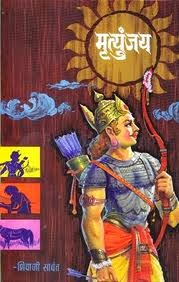Rimjhim Gire Saawan...
My brother in London has learnt all about the British predilection for discussing the weather--was about how the rains were going to make a complete wash-out of September. The summer there was effectively over, according to the weather forecast officials, from now on it was going to be rain all the way.
The sadness and disappointment on the faces of the Britishers was almost palpable, as everyone glumly seemed to agree that it was indeed time to put away those sundresses and shorts and bring out the brollies and boots (not that you can ever put them away in England, which is famous for showing you all the four seasons in the course of a single day). The days of the balmy sunshine were over; from now on it was going to be wet, wet, wet.
As I nodded along sympathetically at my brother, I couldn't help marvelling at the very different attitude the Britishers and we Indians have to the rains. In India, we crave for it during the long summer months when temperatures climb into the stratosphere. We count the days down to the arrival of the monsoon on our shores. We get rather stroppy if it doesn't arrive on time. We measure every inch of rain to make sure that we have got our entire annual quota. We keep a jealous eye out for other cities, which may have got a little more of the downpour. A bad monsoon can make us very bad-tempered (not least because of its effect on the economy).
Yes, we love the rains--about as much as the Britishers abhor it. You could well say that this is because of those poor souls have too much of good thing, with it drizzling down every single day (at least, it certainly feels that way). Since we have to suffer through a long, hot, dusty summer, we long for the relief that the rains bring along with them. In a sense, perhaps, for all our new-fangled urban ways, we are still an agricultural country by heart. The sight of the rains is an indication that we will have a good harvest this year. Remember the rain song "Ghanana Ghanan" in Lagaan, as the whole village turns out to celebrate the advent of the first monsoon clouds in the village?
In India, our attitude to the rain is much like that of a small child looking out eagerly for a much-awaited treat--and then jumping with joy when it finally arrives. No matter how old you are, if you are an Indian, there is a sense of joy and abandon attached to the rains.
As a kid, I remember stripping down to my vest and running down to the compound when the first rainstorms hit. All the children of the building would congregate at the compound, yelling and screaming with excitement, as they were soaked to the skin in the downpour. Once again, the rains had accumulated in puddles, we would make little paper boats and sail them, having impromptu competitions to see which one of them lasted the longest in water.
Even now that I am all grown up, there is still something irresistible about the idea of going for a walk in the rain, quite unprotected by an umbrella or a raincoat. Nothing quite matches the feel of rain water as it drops down in tiny droplets on your face or streams down your head or even gathers around your shoes making them squelch so satisfactorily.
This probably explains why rains are such a staple of romance in India--both in real-life and in the movies. Young lovers walk along the beach in Juhu as raindrops pelt down; honeymooners book themselves a cottage in Goa during the monsoons; and Hindi film heroines all the way from Madhubala to Zeenat Aman, Mumtaz to Sridevi to Katrina Kaif obligingly slip into see-through chiffon sarees before dancing in the rain with their co-stars.
Of course, it's not all about young love alone. Rains have a special significance for families as well. Some of them drive down to the seaside or by a lake to watch the rain come down. Others hunker down time to play antakshari or dumb charades. Some spend time listening to the many songs that celebrate the season. Then, there are those who make the most of rainy days by snuggling down in bed with a good book and a piping hot cup of tea (much as the English would make the most of sunny days by basking in the gardens, with a glass of gin and tonic or a tumbler of Pimms within reach).
Needless to say, a whole school of cuisine has been built around the monsoons. In the north, the first sign of showers has the matriarch of the house setting on a pan of oil to deep-fry some pakodas. In Bengal, the rain is the signal to cook some hot khichuri with lots of ghee floating on top. In Gujarat, it's time for some dal vadas with chillies and salted onions for added oomph. In Maharashtra, they bring on the "gavathi chaha" (grass tea) and sabudana vadas.
As for me, the rains are the perfect excuse to take a day off, sit well back on the window sill and simply stare at the sky pouring down. The cup of tea is mandatory though I wouldn't decline if someone asked me for a plate of pakodas if someone asked me politely. :)


Comments